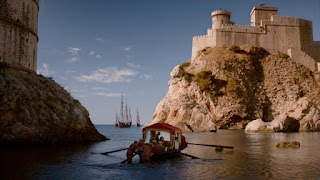subota, 25. srpnja 2015.
History[edit] In 1093 when king Ladislaus (1040-1095) moved the bishop's chair from Sisak to Zagreb, he proclaimed the existing church as a cathedral. Construction on the cathedral started shortly after his death and was finished in 1217 and consecrated by king Andrew II of Hungary. The building was destroyed by the Tatars in 1242 but rebuilt by bishop Timotej (1263-1287) a few years later . At the end of the 15th century, the Ottoman Empire invaded Bosnia and Croatia, triggering the construction of fortification walls around the cathedral, some of which are still intact. In the 17th century, a fortified renaissance watchtower was erected on the south side, and was used as a military observation point, because of the Ottoman threat. The cathedral was severely damaged in the 1880 Zagreb earthquake. The main nave collapsed and the tower was damaged beyond repair. The restoration of the cathedral in the Neo-Gothic style was led by Hermann Bollé, bringing the cathedral to its present form. As part of that restoration, two spires 108 m (354 ft) high were raised on the western side, both of which are now in the process of being restored as part of an extensive general restoration of the cathedral. The cathedral is depicted on the reverse of the Croatian 1000 kuna banknote issued in 1993.[2] When facing the portal, the building is 46 meters wide and 108 meters high.[3] The cathedral contains a relief of Cardinal Aloysius Stepinac with Christ done by the Croatian sculptor Ivan Meštrović. The cathedral was visited by Pope Benedict XVI on 5 June 2011 where he celebrated Sunday Vespers and prayed before the tomb of Blessed Aloysius Stepinac. Gallery[edit]
Pretplati se na:
Postovi (Atom)











































































































































































































